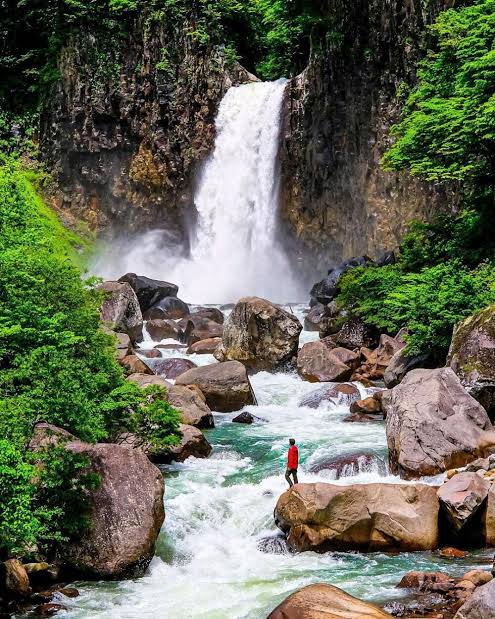Why are we witnessing widespread floods and the destruction of major cities across the globe, even in a time when the overall amount of rainfall is decreasing?
In the past, it was common to say that it rained three times a month, equating to about 36 days of continuous rain throughout the year. However, today, even just two days of rain can wreak havoc, causing widespread destruction across entire countries and cities.
Oh no! Has natural rainfall become a problem?
Why Are We Afraid of Rain?
In recent times, rain, once a symbol of renewal and sustenance, has become a cause for alarm. Water pooling and sudden floods have turned the soothing showers into a source of destruction. But what is behind these abrupt and damaging floods? The answer can be summed up in one line: Human Greed.
Much like how the government ensures that murderers and thieves do not go unpunished, there should be strict repercussions for those who contribute to water scarcity and environmental degradation. This lack of accountability is why we now face devastating floods and widespread damages.
Unraveling the Causes of Sudden Floods
Natural Water Flow: Water naturally flows from higher to lower areas, eventually making its way to the sea.
Mountain to Sea Journey:
Water travels from high mountains through a network of waterways including mountains, waterfalls, dams, rivers, streams, canals, ponds, reservoirs, tanks, wetlands, marshes, creeks, brooks, and tiny waterways such as ditches, drains, gullies, rills, and runnels.
Crucial Waterways: These waterways are vital as they form a continuous connection that allows excess rainwater to flow freely and reach the sea.
Disappearance of Surface Waterways:
In major cities worldwide, the extensive network of surface waterways and canals that facilitated this natural water flow has vanished. In Tamil Nadu, for instance, lands marked as 'Oodai porambok' and 'Kaalvaay Porambok' ( ஓடைப் புறம்போக்கு / கால்வாய் புறம்போக்கு in Tamil) in land records have been encroached upon by antisocial elements.
Impact of Encroachment:
These encroachments have led to houses and shops being built over crucial waterways, blocking them and causing severe flooding. Government officials who permitted electrical connections, water supply, and collected municipal taxes for these illegal structures should face severe punishment under criminal laws. If possible, their properties should be confiscated.
Root Causes of Encroachment
Lack of Agricultural Promotion:
The government’s failure to promote agriculture has led to the decline of villages and water conservation efforts.
Migration to Cities:
Young people are moving to modern industries, while older individuals are left without resources. This migration has led to a surge in city populations, with people forced to live in slums, often on dried-up lake beds and canal banks.
Illegal Settlements:
These settlements start as huts and eventually turn into concrete buildings, contributing to the blockage of natural waterways.
Consequences for Urban Areas:
This unchecked urbanization has left no space for children to play or move around. Even small government-owned spaces have been encroached upon, turning cities like Chennai, Coimbatore, and Tiruchirappalli into urban "hells," thanks to these antisocial elements.
Let's move on! All of this is a summer story!
Addressing the Dual Threat of Floods and Drought: A Call to Action
As the rainy season arrives, the irony of our situation becomes painfully clear. The excess water, with no natural channels left unblocked by human encroachment, has nowhere to go. It meanders aimlessly, invading homes and streets, before eventually finding its way to the sea. By then, entire towns are inundated with water. What a cruel twist of fate—we suffer water scarcity like desert nations during the summer, begging neighbouring states for water. People are forced to buy water in plastic bottles for exorbitant prices, ranging from 50 to 100 rupees.
The Paradox of Floods and Drought:
One day we face floods, and the next day, a drought. How can we expect respect when our water management is in such disarray? The situation demands immediate and decisive action.
Here’s what the government should do:
Halt Issuance of Pattas for Waterways:
Cease the issuance of land deeds for waterways. These lands should be preserved for their intended purposes, regardless of how long it takes to reclassify them. This includes lake porambok, canal porambok, and grazing lands.
Secure and Demarcate Government Lands:
Identify and secure lands already registered in Village A-Registers. Clearly demarcate their boundaries with stone markers to emphasize land recovery and protection. Implement stricter laws and punishments, including property confiscation for violators.
Differentiate Between the Poor and Antisocial Elements: The government must decide whether a civilized society should suffer for the greed of a few hundred individuals. We need to distinguish between genuinely needy individuals and antisocial elements, ensuring we don't confuse the two.
Regular Inspection and Maintenance of Waterways:
Officials should inspect and maintain waterways every six months, utilizing flood relief funds for this purpose. This proactive approach will reduce the need to seek financial aid from the central government annually.
Proper Waterway Maintenance to Prevent Floods and Droughts:
By maintaining waterways properly, we can mitigate the risks of flash floods and severe droughts, creating a more balanced and sustainable water management system.
Our current predicament of alternating between floods and droughts is unsustainable and demands urgent attention.
By implementing these measures, we can restore natural water channels, ensure efficient water management, and protect our towns and cities from the destructive cycle of excess flood and scarcity of water both.
-Yozen Balki
(My old blog year 2011: English Translation)
💫💫🎊🎊
https://yozenbalki.blogspot.com/2011/11/protect-water-protect-your-city.html?m=1
💞💞🎊🎊💫💫


